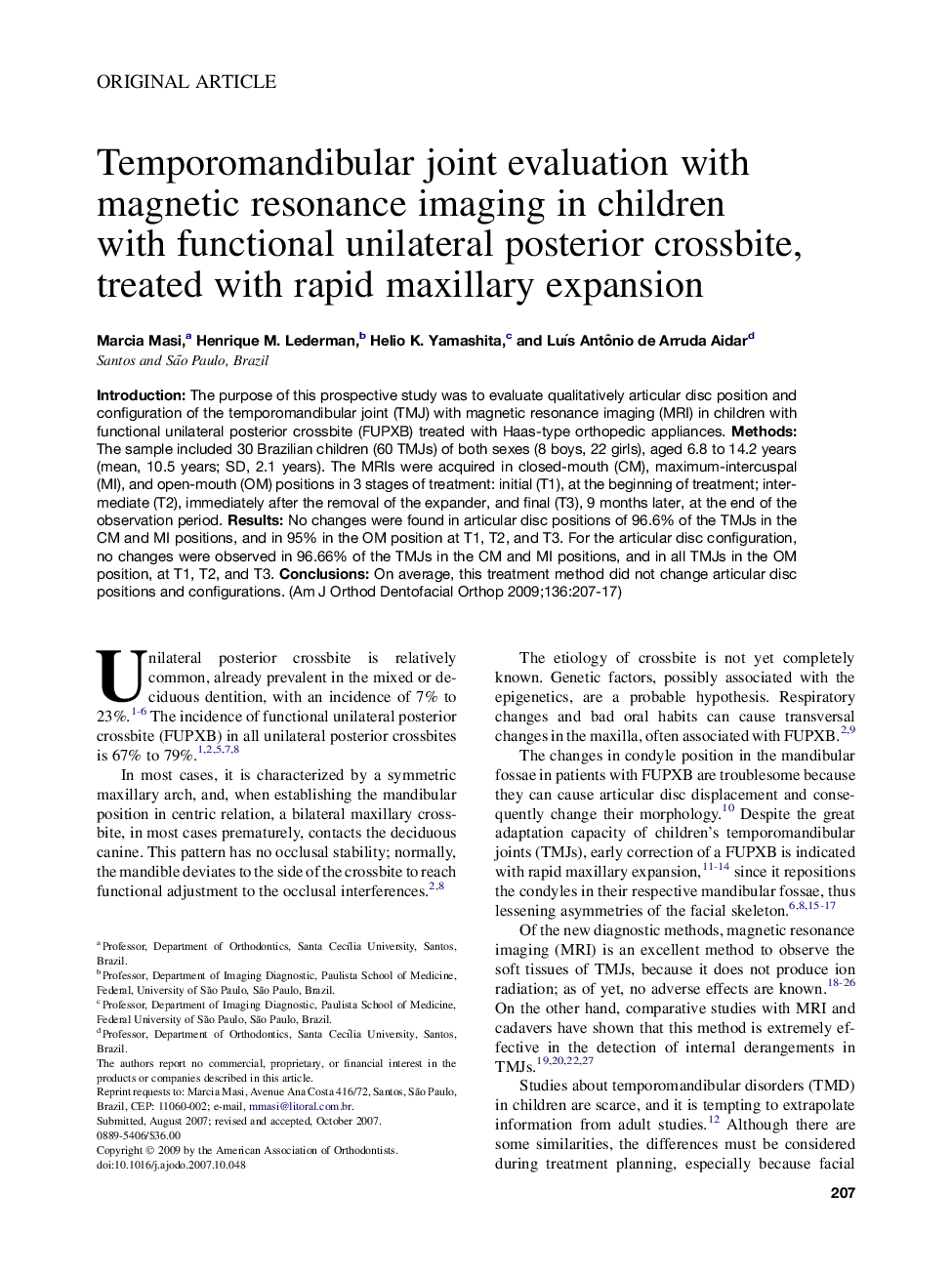| Article ID | Journal | Published Year | Pages | File Type |
|---|---|---|---|---|
| 3118846 | American Journal of Orthodontics and Dentofacial Orthopedics | 2009 | 11 Pages |
IntroductionThe purpose of this prospective study was to evaluate qualitatively articular disc position and configuration of the temporomandibular joint (TMJ) with magnetic resonance imaging (MRI) in children with functional unilateral posterior crossbite (FUPXB) treated with Haas-type orthopedic appliances.MethodsThe sample included 30 Brazilian children (60 TMJs) of both sexes (8 boys, 22 girls), aged 6.8 to 14.2 years (mean, 10.5 years; SD, 2.1 years). The MRIs were acquired in closed-mouth (CM), maximum-intercuspal (MI), and open-mouth (OM) positions in 3 stages of treatment: initial (T1), at the beginning of treatment; intermediate (T2), immediately after the removal of the expander, and final (T3), 9 months later, at the end of the observation period.ResultsNo changes were found in articular disc positions of 96.6% of the TMJs in the CM and MI positions, and in 95% in the OM position at T1, T2, and T3. For the articular disc configuration, no changes were observed in 96.66% of the TMJs in the CM and MI positions, and in all TMJs in the OM position, at T1, T2, and T3.ConclusionsOn average, this treatment method did not change articular disc positions and configurations.
